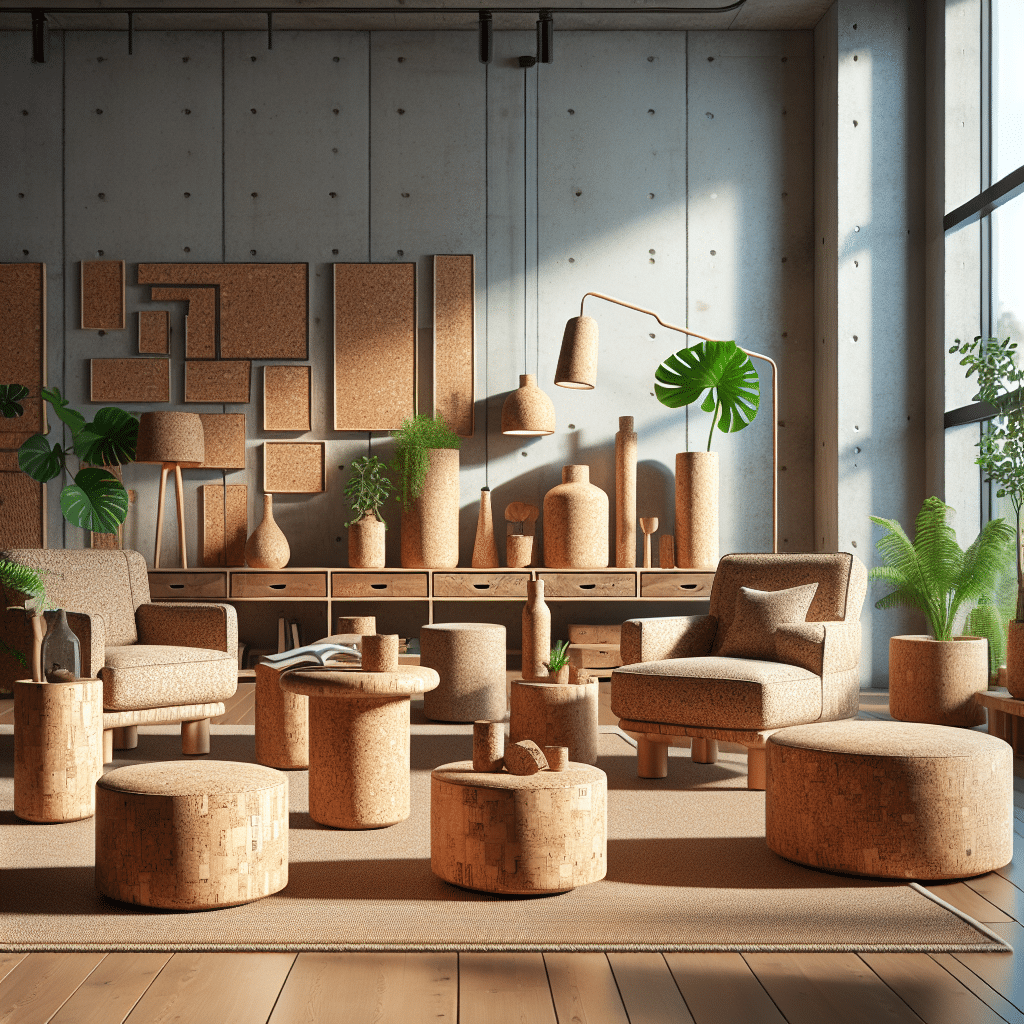The Rise of Cork Furniture in Eco-Friendly Design
Understanding Cork as a Material
Cork, a natural harvested material, hails from the bark of cork oak trees, primarily found in the Mediterranean region. This incredible natural product is sustainably harvested every nine years without harming the tree, making it a renewable resource. Cork has unique properties—lightweight, durable, and resistant to moisture—that make it an ideal choice for furniture design. With increasing awareness of environmental challenges, particularly in the furniture industry, cork is gaining prominence as an eco-friendly alternative.
Environmental Benefits of Cork
-
Sustainable Sourcing: Cork trees play a vital role in maintaining biodiversity and combating climate change. The harvesting process encourages forest conservation, serving as a habitat for various species. As these trees absorb carbon dioxide, they help reduce greenhouse gas emissions.
-
Biodegradability: Unlike synthetic materials often used in furniture production, cork is biodegradable. It breaks down naturally in the environment, minimizing landfill contributions and toxic waste associated with synthetic products.
-
Low Environmental Footprint: Cork production typically involves less energy consumption compared to plastic or metal manufacturing. This reduced energy expenditure translates to lower carbon emissions, making cork products environmentally friendly.
Design and Aesthetics
Cork offers a unique texture and aesthetic appeal, making it desirable for modern design. Its natural color palette, which ranges from light tan to rich brown, adds warmth and a sophisticated touch to any interior space. Designers can easily work with cork, leveraging its pliability to create a wide variety of styles—ranging from minimalist to avant-garde.
-
Versatile Applications: Cork can be molded, shaped, and cut into different forms, making it applicable for various furniture items, such as chairs, tables, and shelves. Its versatility allows designers to create innovative looks that are functional and stylish.
-
Acoustic Properties: One notable feature of cork is its sound-absorbing capability. Properties of cork make it an excellent choice for open-plan living spaces or offices where noise reduction is essential.
-
Textural Richness: The natural elasticity and warmth of cork furniture contribute to a cozy environment. The tactile quality of cork enhances user experience, encouraging a connection to nature within interiors.
Prominent Trends in Cork Furniture
-
Eco-Friendly Brands: An increasing number of brands are stepping forward to embrace sustainable practices. Companies focusing on eco-friendly furniture are recognizing cork as a premium choice. Notable brands such as HAY and Vitra are incorporating cork into their collections, showcasing the material’s versatility.
-
DIY and Upcycling: The cork furniture trend invites DIY enthusiasts to incorporate cork into personal projects. Upcycling old materials with cork transforms tired furniture into fresh and appealing pieces. With tutorials available online, aspiring designers can easily create unique cork creations that embody their individual style.
-
Modular and Space-Saving Solutions: Cork’s lightweight characteristic allows for the design of modular furniture that is easily movable. This shift toward livable, compact spaces in urban areas makes cork furniture a practical choice, adapting to various lifestyles and preferences.
Challenges and Considerations
Despite its many benefits, the rise of cork furniture is not without challenges. For instance, the initial cost of cork can be higher than that of traditional materials. However, its durability often translates to a longer lifespan and less frequent replacement, potentially offering long-term savings.
-
Supply Chain Issues: Dependence on a specific geographical region for cork production can lead to supply chain vulnerabilities. As interest in cork furniture grows, sourcing sustainably is essential to prevent overharvesting or ecological impact.
-
Limited Awareness: Awareness of cork’s environmental benefits is still growing. Although environmentally conscious consumers are increasingly drawn to sustainable options, the market needs more education and advocacy to reach a broader audience.
The Future of Cork Furniture
The future of cork furniture looks promising within the context of a growing eco-conscious consumer base. As sustainability becomes a core value among millennials and Gen Z, the demand for eco-friendly materials like cork will likely rise.
-
Innovation in Design: Designers are exploring new techniques to manipulate cork, creating innovative shapes and functionalities. Research into combining cork with other materials, such as recycled composites, may yield exciting new options that expand the limits of cork furniture.
-
Integration into Smart Homes: As smart home technology evolves, functionality in furniture design will take precedence. The integration of cork into modular and adaptable furniture systems could lead to future trends where smart designs meet eco-friendly materials.
-
Global Awareness: More global initiatives advocating for sustainable design practices are emerging. Awareness campaigns emphasizing the ecological benefits of cork can positively influence consumer decisions, potentially leading to increased market demand.
Conclusion
The rise of cork furniture represents a significant shift toward eco-friendly design in the furniture industry. As sustainability continues to drive consumer choices, cork’s unique properties and aesthetic appeal position it as a leading choice for modern interiors. Designers and consumers alike are embracing this natural material, indicating a future where eco-conscious decisions shape the landscape of furniture design. As cork furniture becomes more prevalent, it heralds a new era in sustainable living, inviting people to merge style with environmental responsibility.
